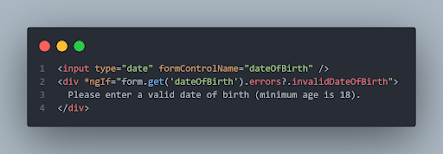Understanding Node.js Event Emitter: A Powerful Event Handling Mechanism
Introduction
Event-driven programming is a popular paradigm that allows programs to respond to events or triggers asynchronously. In Node.js, the EventEmitter class from the core events module provides a powerful mechanism for implementing event-driven programming.
This article will explore the EventEmitter class, its features, and how to utilize it effectively in your Node.js applications.
This article will explore the EventEmitter class, its features, and how to utilize it effectively in your Node.js applications.
What is the EventEmitter?
The EventEmitter class is a fundamental part of Node.js and serves as the backbone for event handling. It enables you to define and emit custom events, as well as register event handlers to respond to those events. The EventEmitter follows the observer pattern, where objects (event emitters) maintain a list of listeners (event handlers) and notify them when an event occurs.
Getting Started
To begin working with the EventEmitter, first, ensure that you have Node.js installed on your system. The events module, including the EventEmitter class, comes bundled with Node.js, so no additional installation is required.
To use the EventEmitter, import it into your code:
 |
| Define EventEmitter |
Basic Usage
Let's dive into a simple example to understand how to use the EventEmitter class:
 |
| Example: Usage of EventEmitter |
In this example, we start by importing the EventEmitter class from the events module. Then, we create a new instance of EventEmitter called myEmitter.
We define an event handler function named eventHandler, which logs a message to the console when invoked.
Next, we register the eventHandler as the handler for a custom event named 'myEvent' using the on method of myEmitter.
Finally, we emit the 'myEvent' event using the emit method of myEmitter. This triggers the execution of the registered event handler, which logs the message 'Event occurred!' to the console.
Advanced Features
The EventEmitter class provides several advanced features to enhance event handling in Node.js applications. Some notable features include:
1. Handling Events Once
The once method allows you to register an event handler that will be executed only once. After the event is emitted and the handler is invoked, it is automatically removed.
 |
| Handling Events Once |
2. Emitting Events with Arguments
You can pass arguments when emitting events, and those arguments will be passed to the event handlers.
 |
| Emitting events with Arguments |
3. Removing Event Listeners
To remove an event handler, you can use the removeListener method, passing the event name and the reference to the handler function.
 |
| Remove the Event Listeners |
4. Error Event
The EventEmitter class has a special event called 'error'. If an event is emitted, and no registered handler exists for that event, or if an error is thrown inside an event handler, the 'error' event is emitted. It's important to handle the 'error' event to prevent uncaught exceptions from crashing your Node.js application.
 |
| Declaring Error Event |
Conclusion
The EventEmitter class in Node.js provides a flexible and efficient way to handle events and build event-driven applications. It allows you to define custom events, register event handlers, and emit events as needed. By leveraging the observer pattern, the EventEmitter class enables decoupled and scalable architectures.
In this article, we explored the basics of the EventEmitter class and covered some of its advanced features.


Comments
Post a Comment